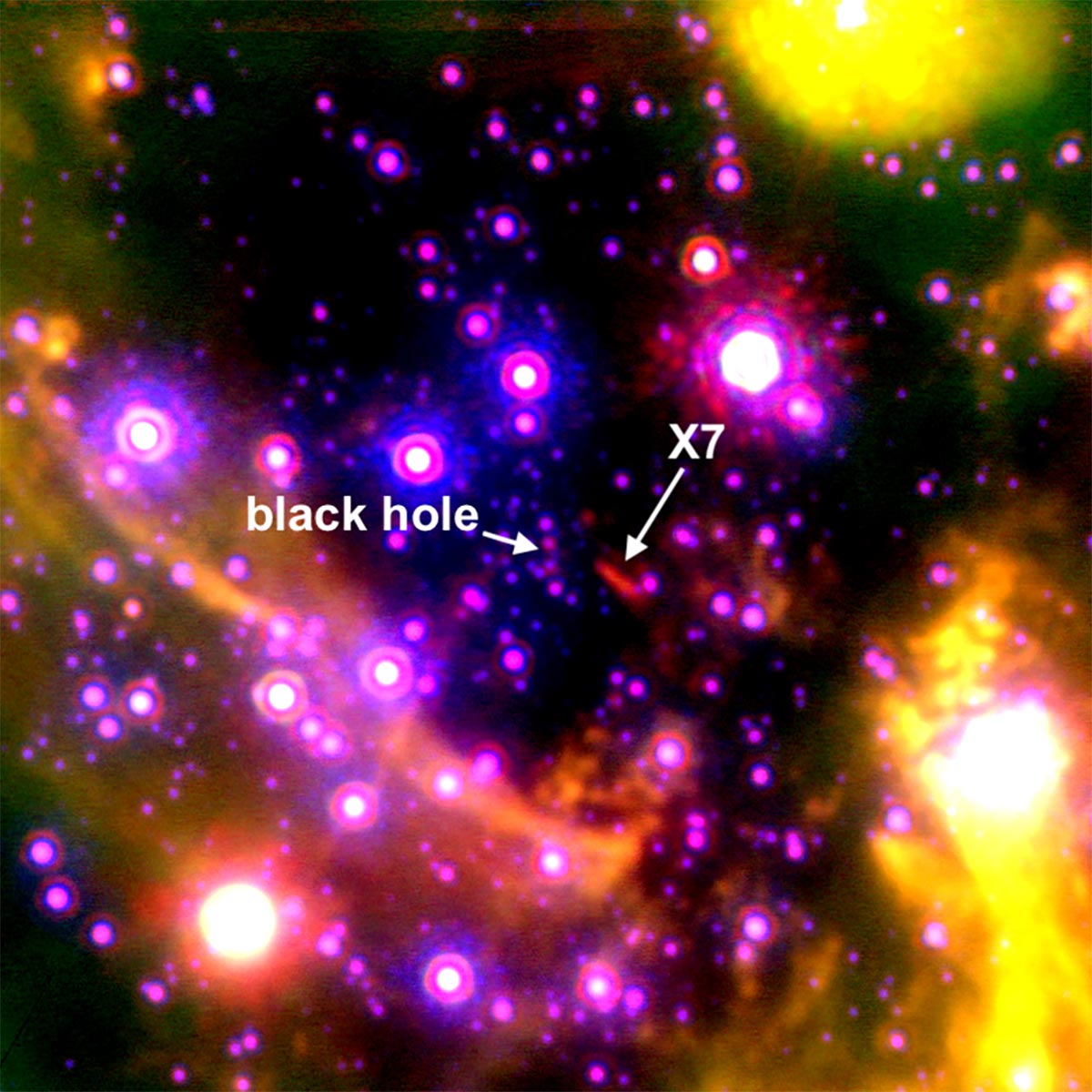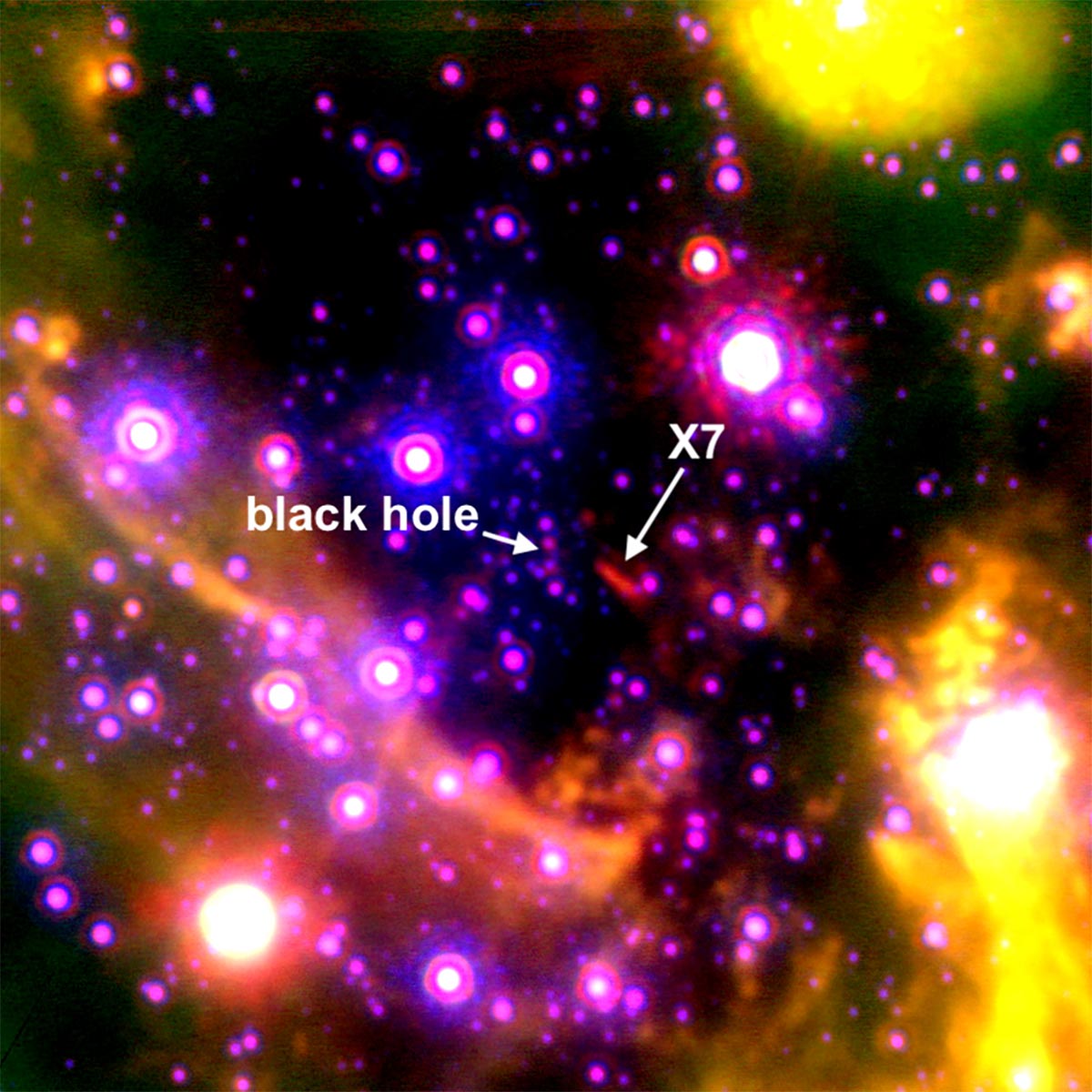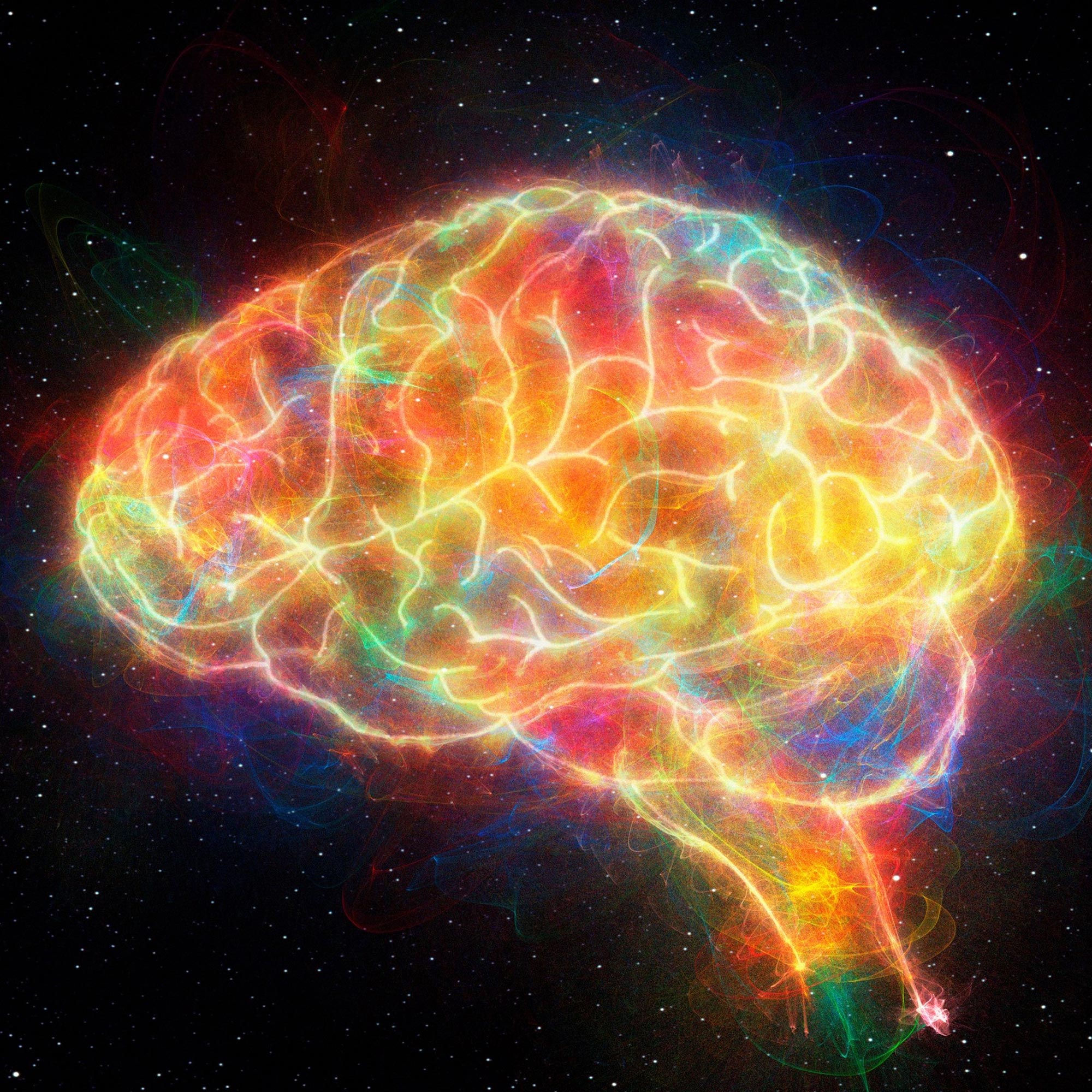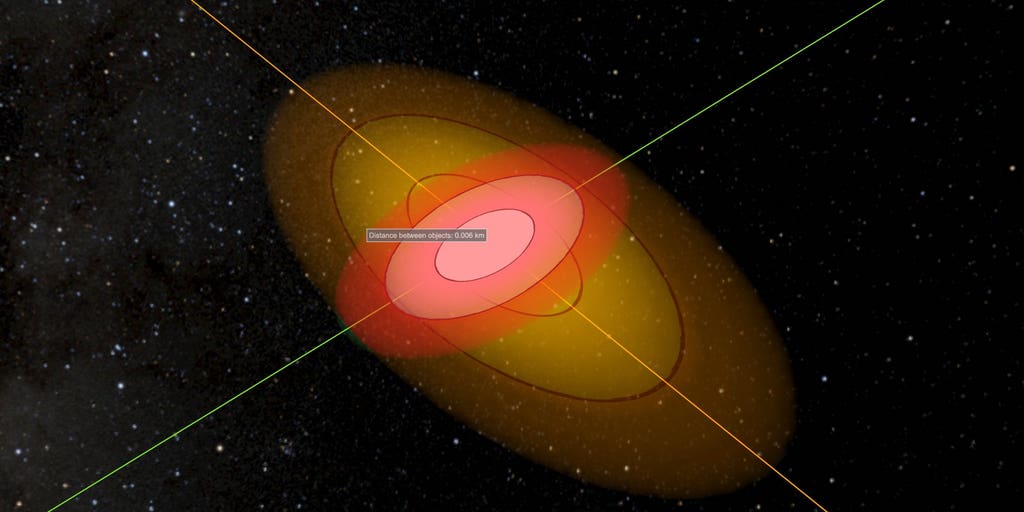
تشير الدراسة إلى أن X7 منفصل لأن الثقب الأسود الهائل ، المسمى Sagittarius A * ، يجعله أقرب. الائتمان: آنا سيورلو / جامعة كاليفورنيا
black hole at the center of the Milky Way galaxy has drawn the interest of scientists because it has evolved dramatically in a relatively short time.
For two decades, scientists have observed an elongated object named X7 near the supermassive black hole at the center of the Milky Way and wondered what it was. Was it pulled off a larger structure nearby? Was its unusual form the result of stellar winds or was it shaped by jets of particles from the black hole?
Now, having examined the evolution of X7 using 20 years of data gathered by the Galactic Center Orbit Inintiative, astronomers from the UCLA Galactic Center Group and the Keck Observatory propose that it could be a cloud of dust and gas that was ejected during the collision of two stars.
Over time, they report, X7 has stretched, and it is being pulled apart as the black hole drags it closer, exerting its tidal force upon the cloud. They expect that within the next few decades, X7 will disintegrate and the gas and dust of which it is composed will eventually be drawn toward the black hole, which is called Sagittarius A*, or Sgr A*.
The study was published on February 21 in The Astrophysical Journal.
“No other object in this region has shown such an extreme evolution,” said Anna Ciurlo, a University of California, Los Angeles (UCLA) assistant researcher and the paper’s lead author. “It started off comet-shaped and people thought maybe it got that shape from stellar winds or jets of particles from the black hole. But as we followed it for 20 years we saw it becoming more elongated. Something must have put this cloud on its particular path with its particular orientation.”
X7 has a mass of about 50 Earths and is on an orbital path around Sgr A* that would take 170 years to complete.
But that might never happen. Based on its trajectory, the team estimates that X7 will make its closest approach to Sgr A* around the year 2036, and then likely spiral toward Sgr A* and disappear.
“We anticipate the strong tidal forces exerted by the galactic black hole will ultimately tear X7 apart before it completes even one orbit,” said co-author Mark Morris, UCLA professor of physics and astronomy.
Tidal forces are the gravitational pull that cause an object approaching a black hole to stretch; the side of the object closest to the black hole is pulled much more strongly than the opposite end.
X7 shows some of the same properties as the other strange dusty objects orbiting Sgr A*. Those so-called G objects look like gas but behave like stars. But X7’s shape and velocity have changed more dramatically than G objects’ have. As it accelerates toward the black hole, X7 is moving rapidly, clocking in at speeds of up to around 700 miles per second.
“It’s exciting to see significant changes of X7’s shape and dynamics in such great detail over a relatively short time scale as the gravitational forces of the supermassive black hole at the center of the Milky Way influences this object,” Randy Campbell, a co-author of the paper and the science operations lead at the Keck Observatory, said in a statement.
Although X7’s origin is still the subject of debate, the finding suggests that it arose after two stars collided.
“One possibility is that X7’s gas and dust were ejected at the moment when two stars merged,” Ciurlo said. “In this process, the merged star is hidden inside a shell of dust and gas, which might fit the description of the G objects. And the ejected gas perhaps produced X7-like objects.”
The merger of two stars is very common, especially when they are near black holes, Ciurlo said.
“This is a very messy process: The stars circle each other, get closer, merge, and the new star is hidden within a cloud of dust and gas,” she said. “X7 could be the dust and gas ejected from a merged star that’s still out there somewhere.”
The findings are the first estimate of X7’s mildly elliptical orbit and the most robust analysis to date of the remarkable changes to its appearance, shape and behavior. The research team will continue to use the Keck Observatory to monitor X7’s dramatic changes as the power of the black hole’s gravity yanks it apart.
“It’s a privilege to be able to study the extreme environment at the center of our galaxy,” Campbell said in the statement. “This study can only be done using Keck’s superb capabilities, and performed at the very special and revered Maunakea, with honor and respect to the mauna.”
Reference: “The Swansong of the Galactic Center Source X7: An Extreme Example of Tidal Evolution near the Supermassive Black Hole” by Anna Ciurlo, Randall D. Campbell, Mark R. Morris, Tuan Do, Andrea M. Ghez, Eric E. Becklin, Rory O. Bentley, Devin S. Chu, Abhimat K. Gautam, Yash A. Gursahani, Aurélien Hees, Kelly Kosmo O’Neil, Jessica R. Lu, Gregory D. Martinez, Smadar Naoz, Shoko Sakai and Rainer Schödel, 21 February 2023, The Astrophysical Journal.
DOI: 10.3847/1538-4357/acb344

“هواة الإنترنت المتواضعين بشكل يثير الغضب. مثيري الشغب فخور. عاشق الويب. رجل أعمال. محامي الموسيقى الحائز على جوائز.”





